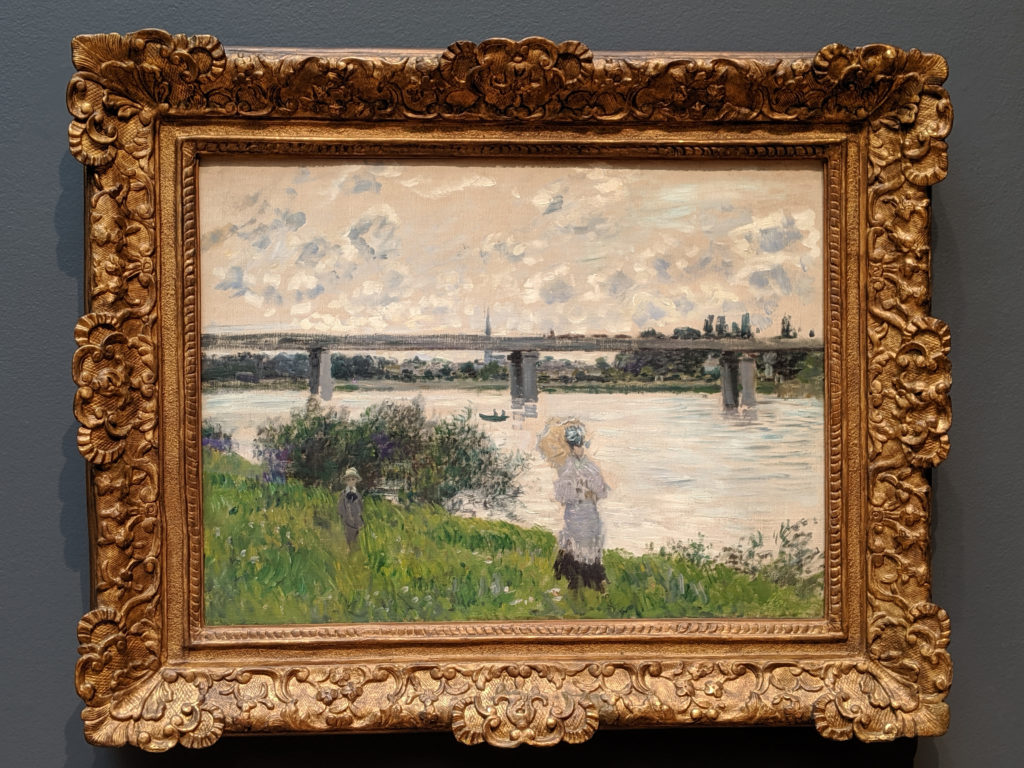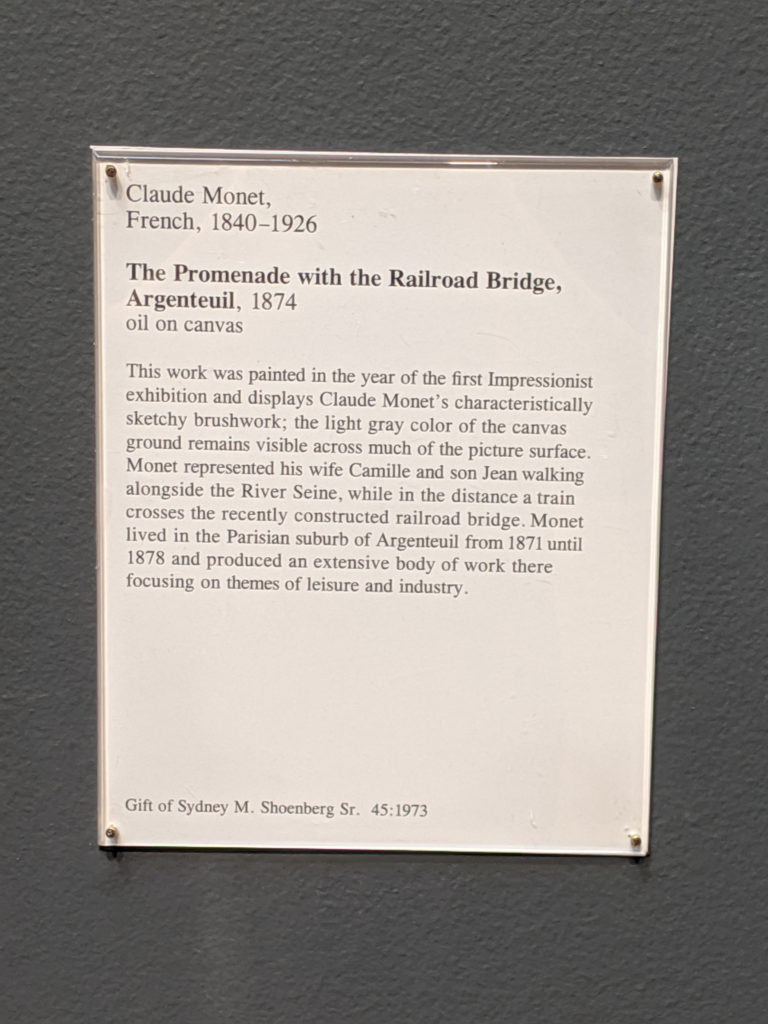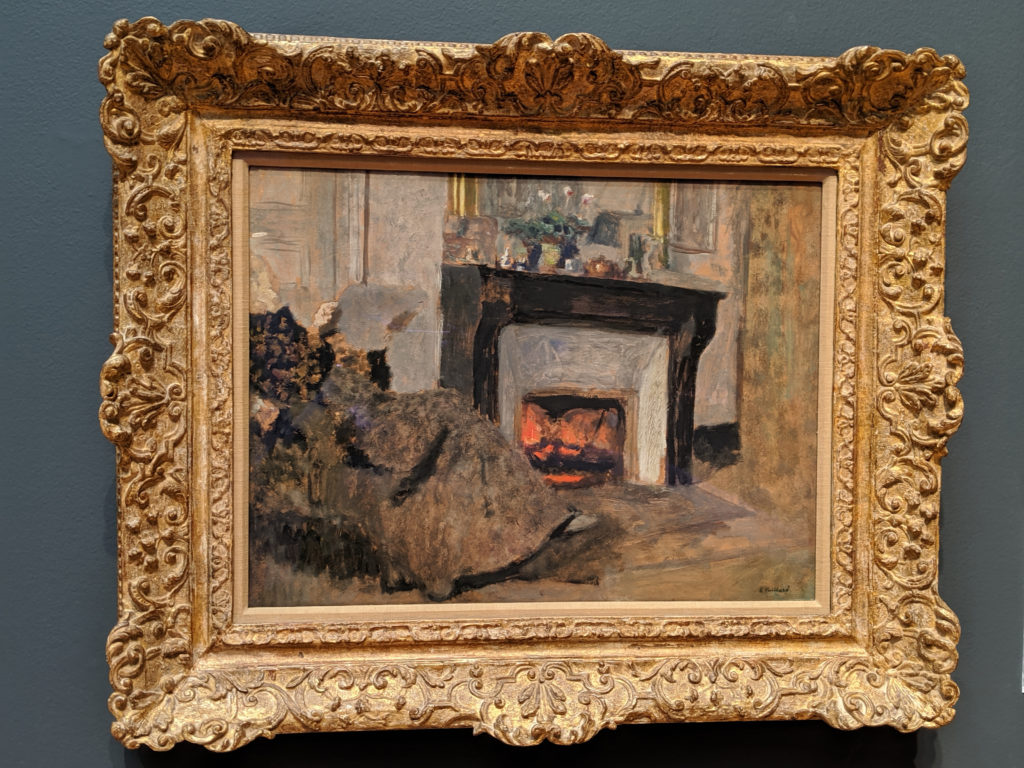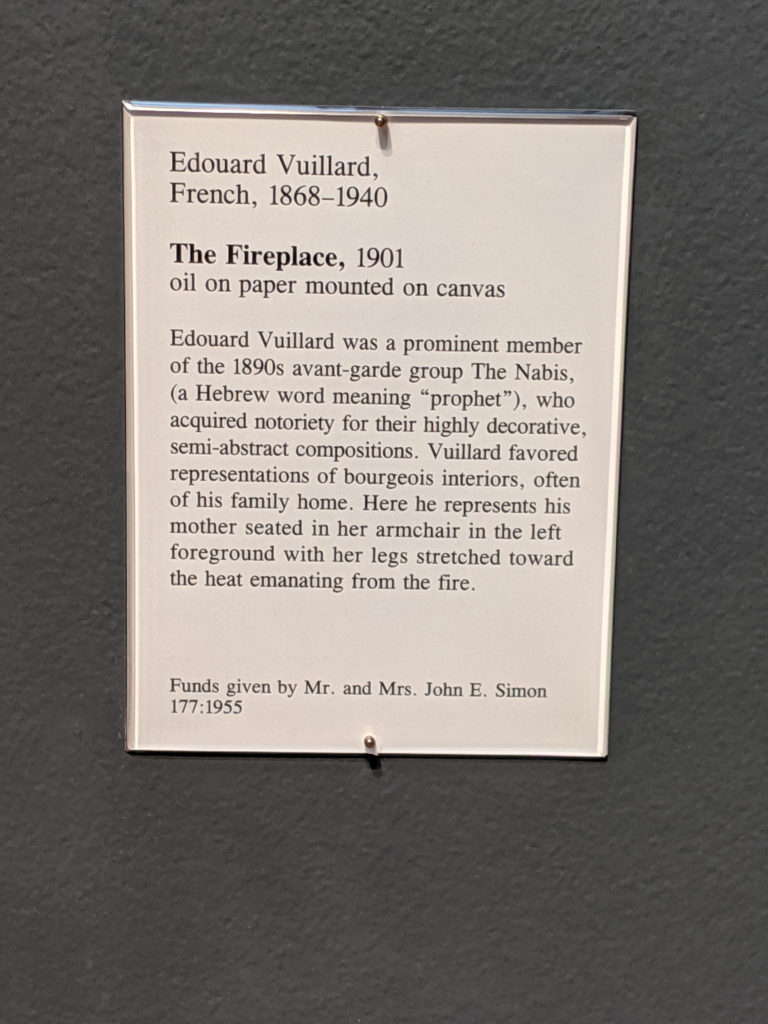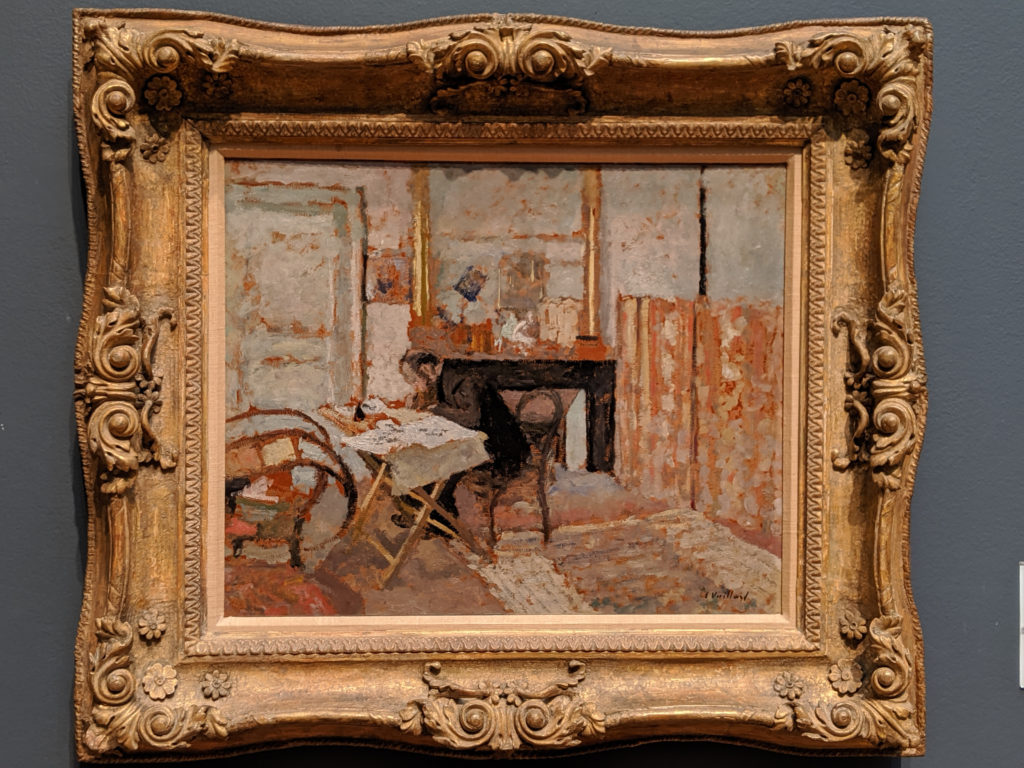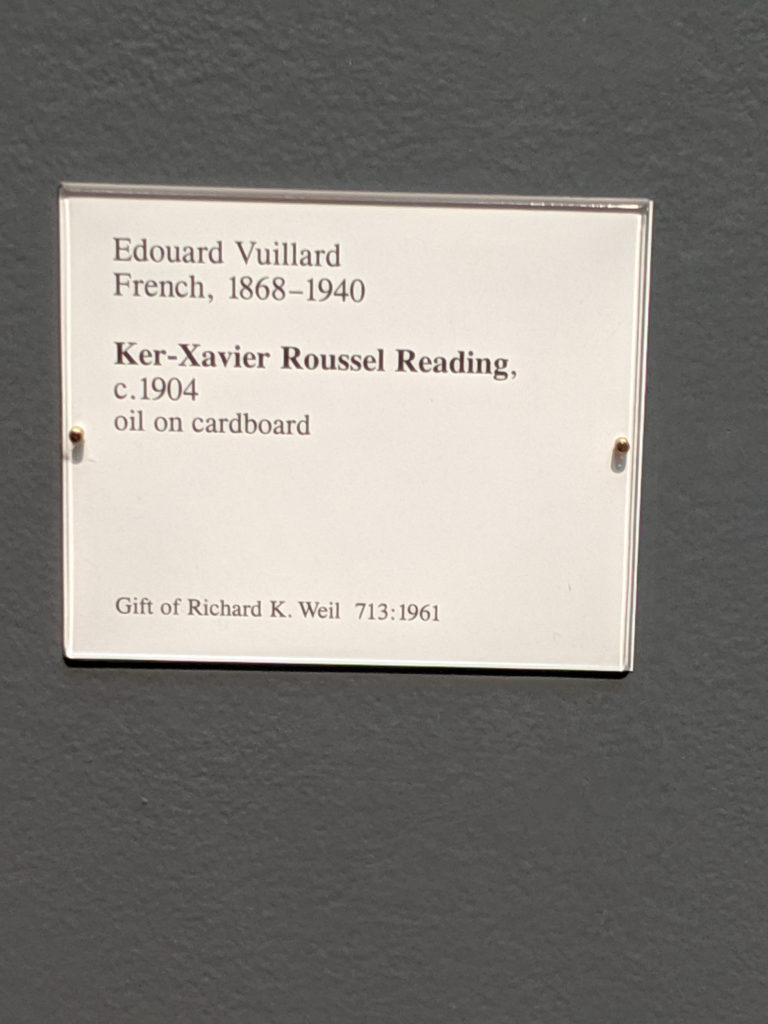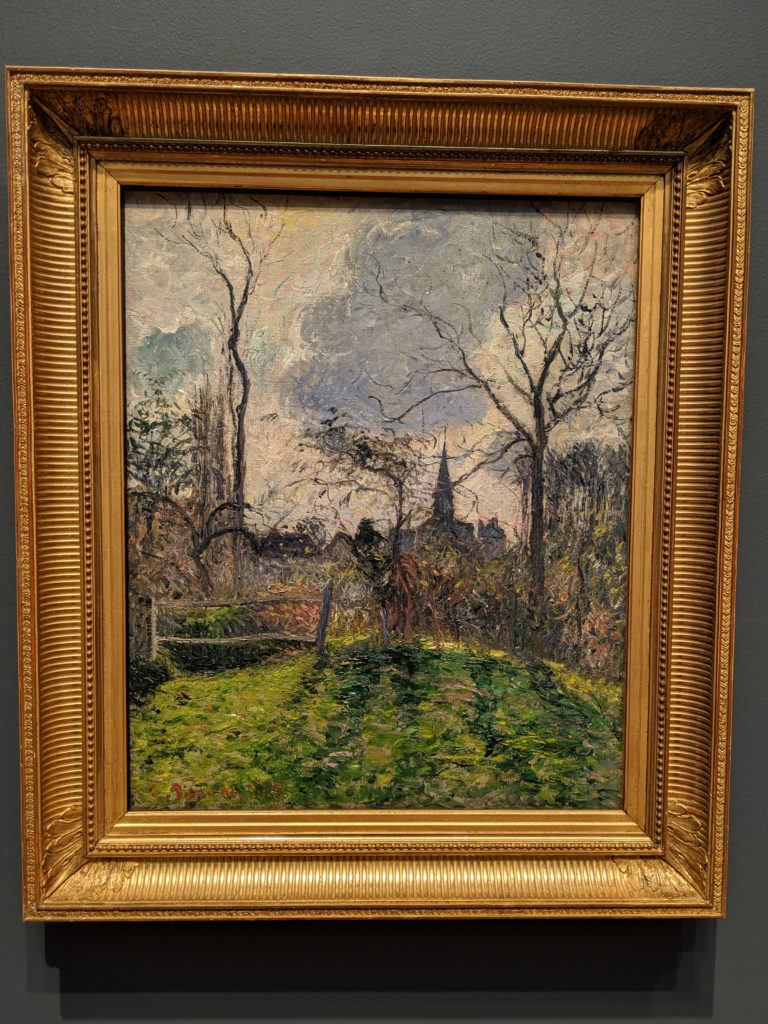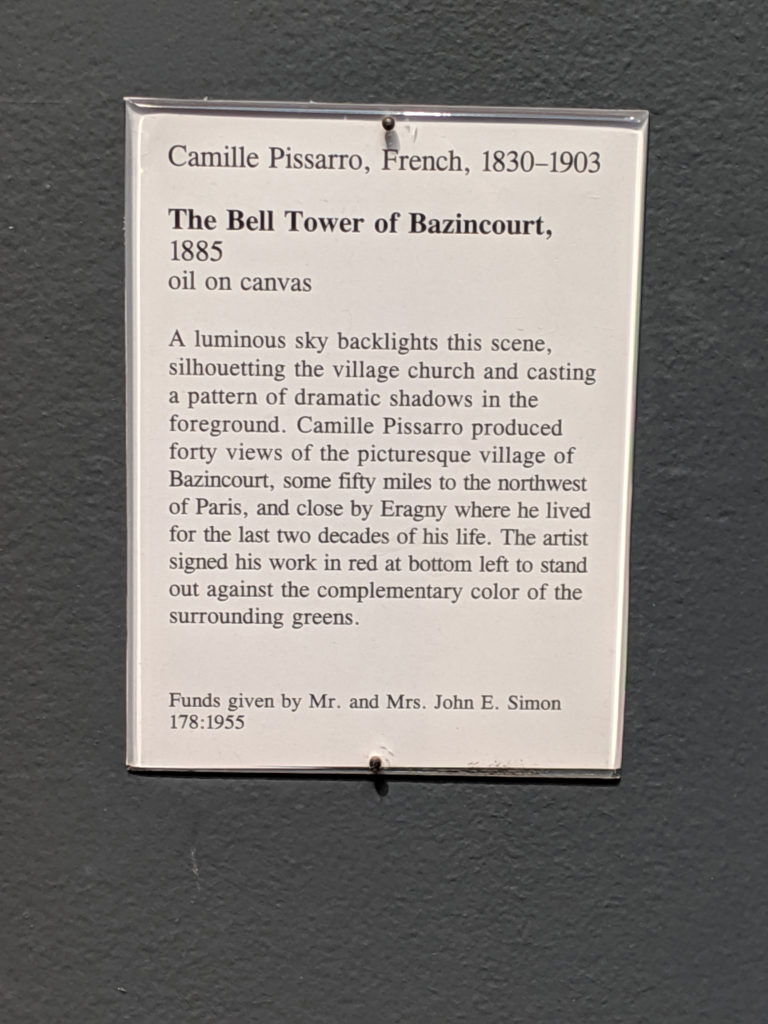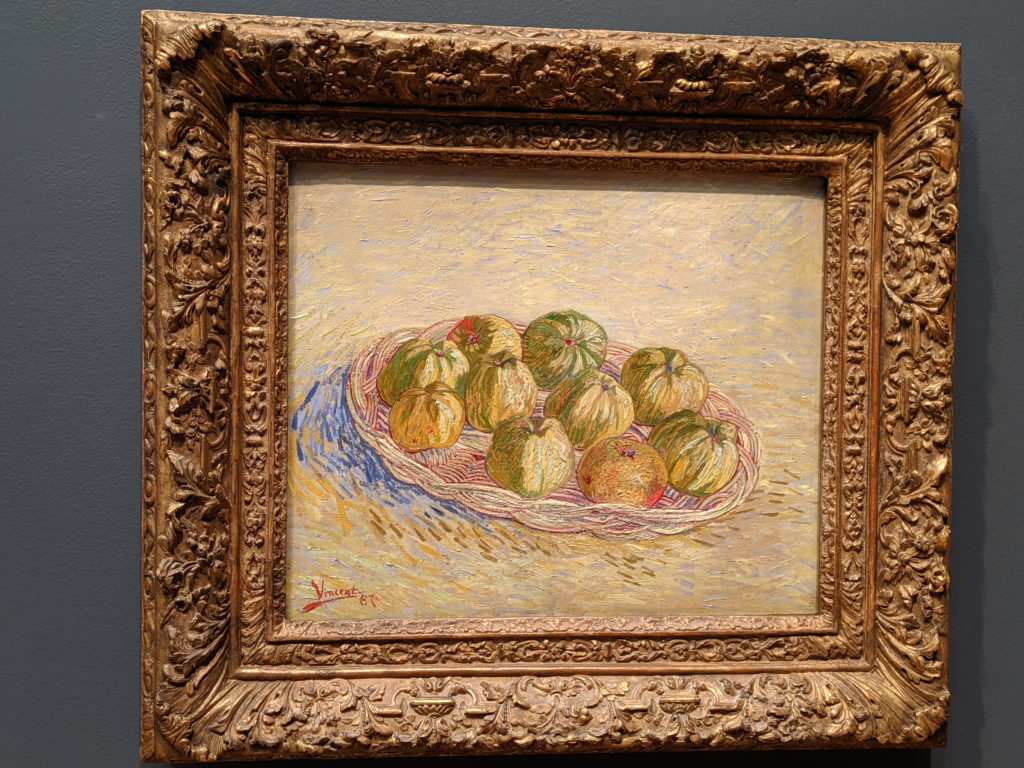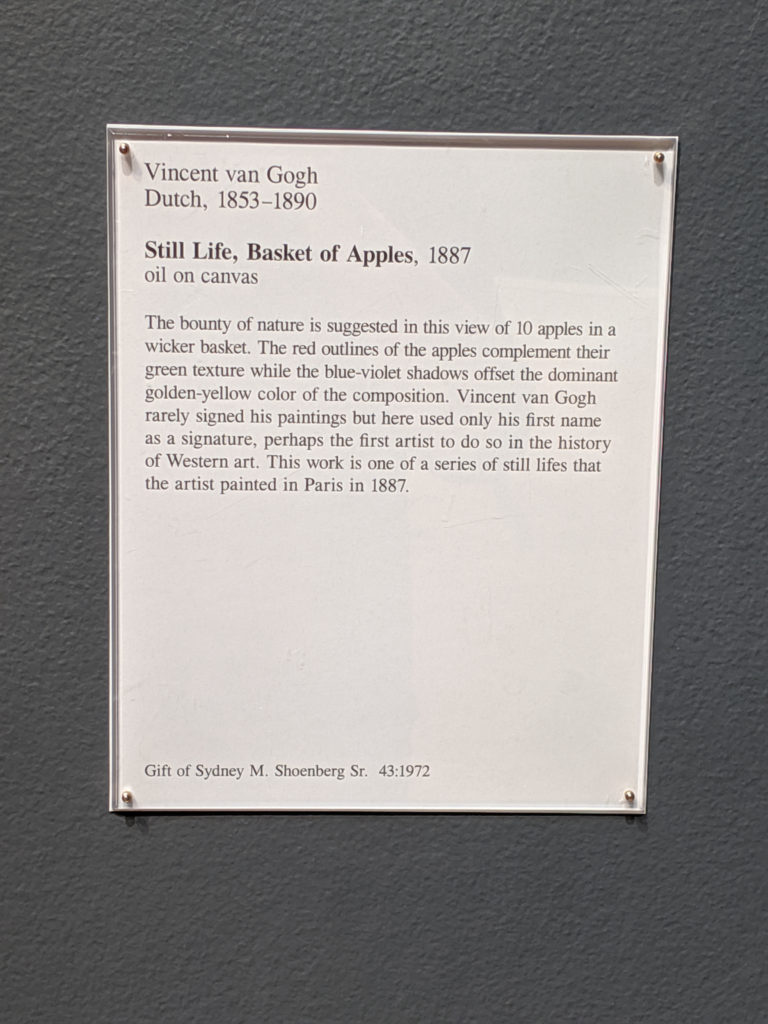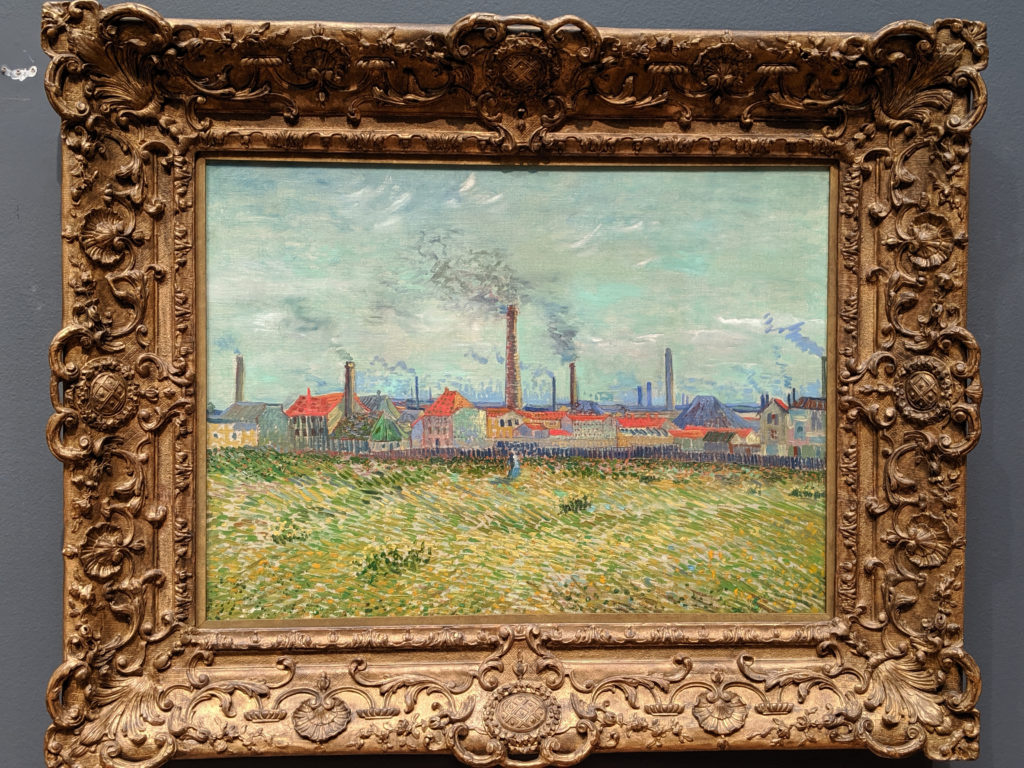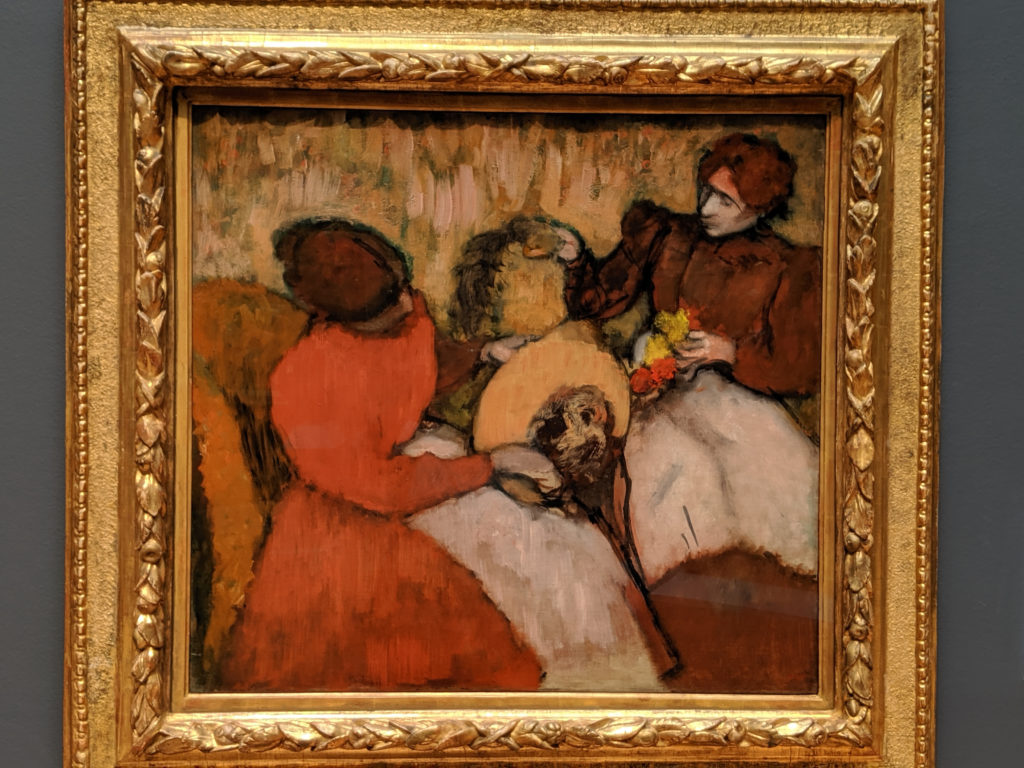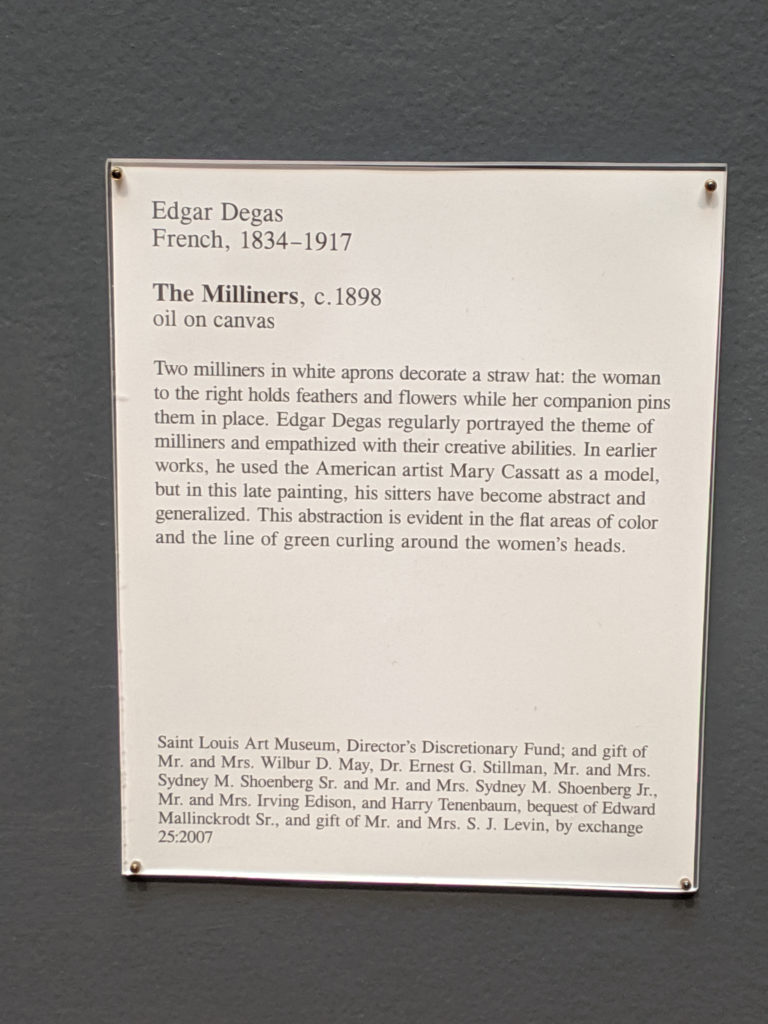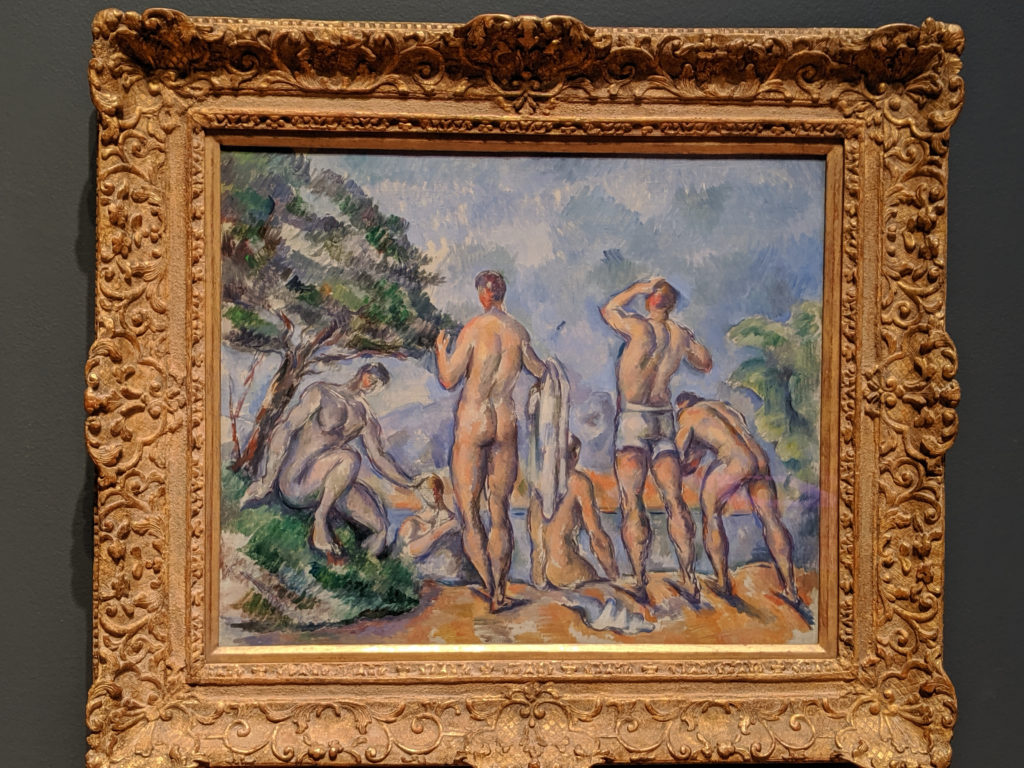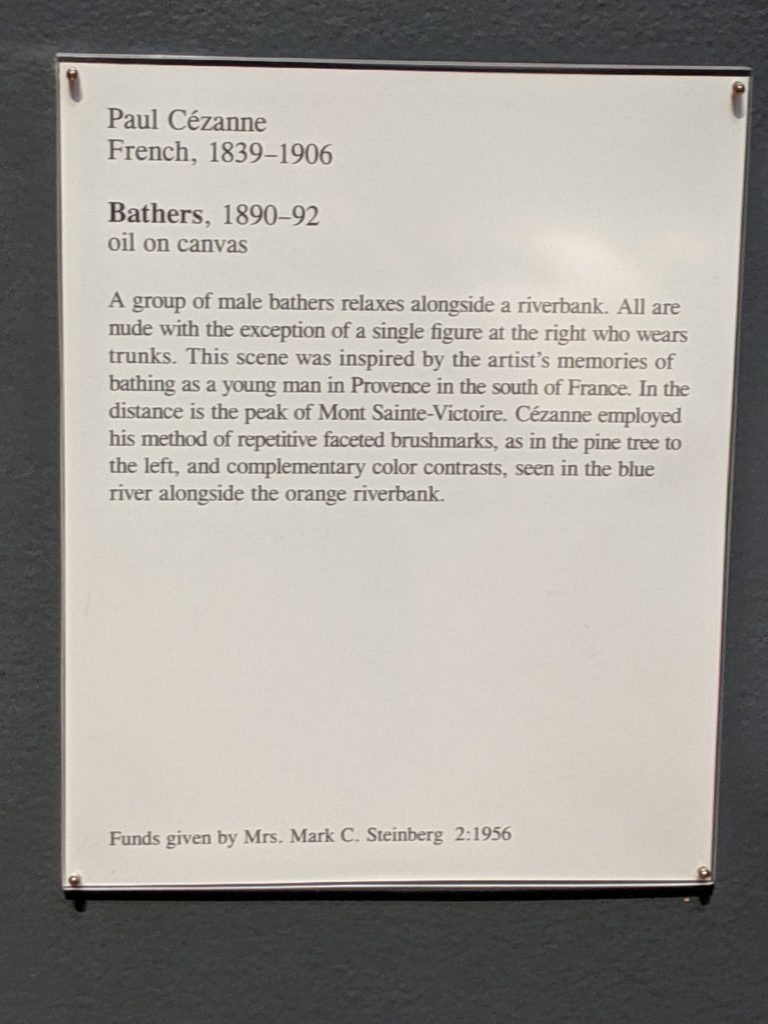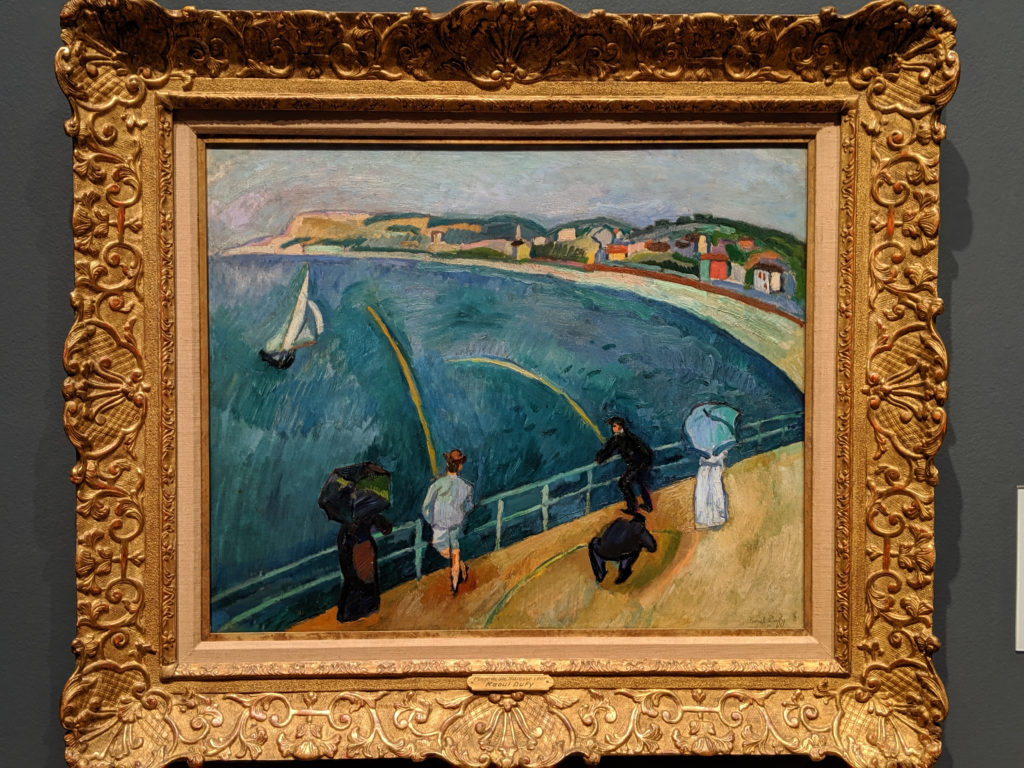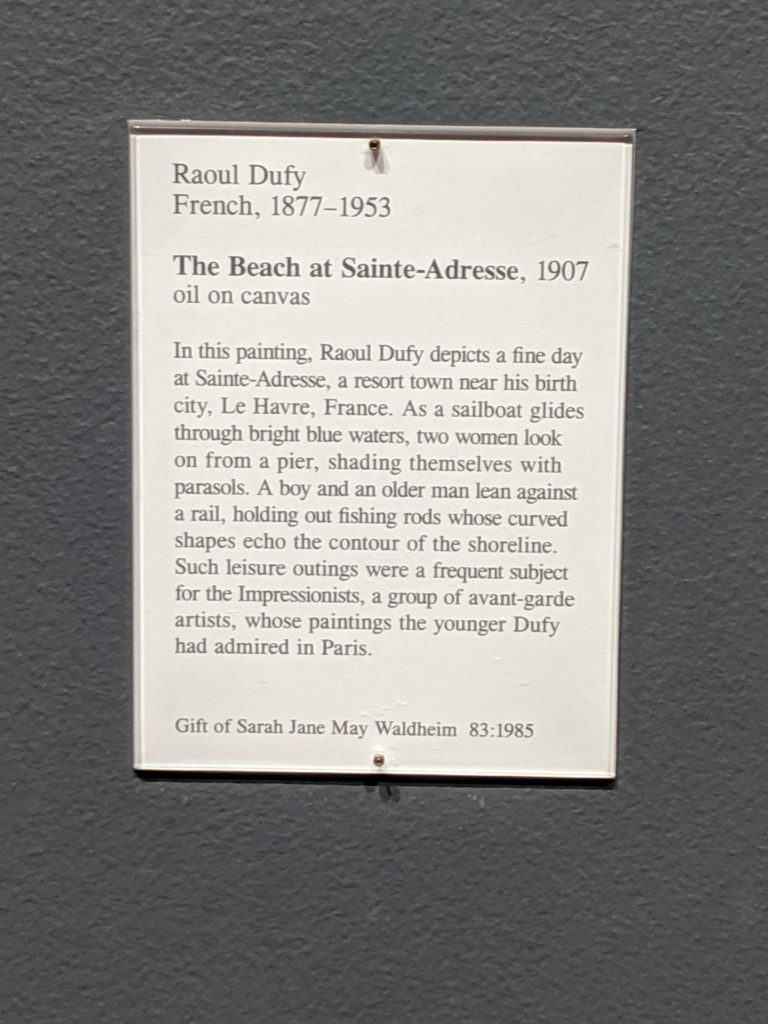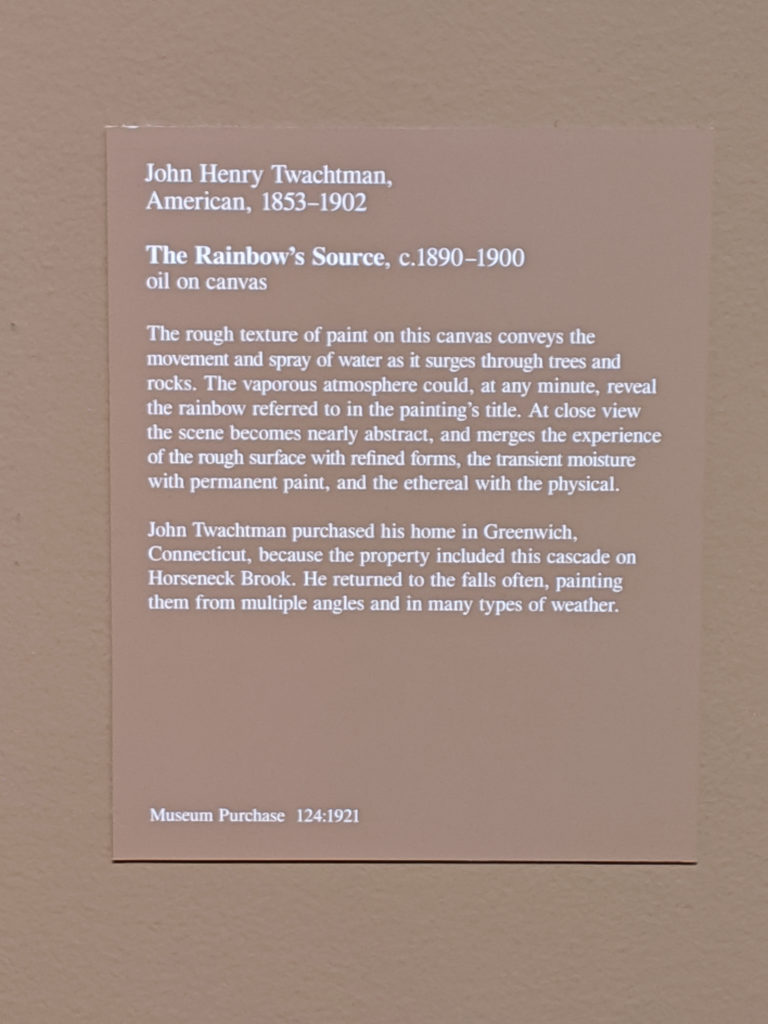Look, it’s Monet! But not just any Monet: this is stereotypical Monet, in the style that would come to define him. You can see the choppiness of the water in the reflections, the sketchiness of the grass (that would later be emulated by van Gogh), and the bitter carelessness of the clouds in the sky as if he just doesn’t give a penny farthing of shits anymore about them. This is Monet before he got famous, when he was out testing his trainers and playing the club scene.
Tag: Impressionism
Saturday
I love how Vuillard’s work always seems to be done with the utmost haste and willful disillusionment, as if he has zero fucks left to give. But the very gentle treatment of the subject belies the lack of fucks theory and, instead, gives us insight into the way he cared for his subjects and the world around him even as he treated it with ineffectual disdain and a kind of ADHD slapdashery.
Friday
Brown is not my favorite color. Brown is not a color: it is all the colors mixed together, and as such, is a non-color. This painting is non-color to the nth degree. However, I still enjoy it for the x factor that it has – the bit of blurry watery-edged give no damn attitude and the way that it just shrugs and says, “take it as it is or not at all”. We all need that.
Thursday
Wednesday
What better way to start the new year off than with another under-respected van Gogh masterpiece? While the colors don’t immediately leap off the canvas and grab you by the wrist and scream, “PLAY WITH ME” like many of his other paintings do, the effect of the palette of colors in this painting overall gives us another feeling: peace and serenity.
Tuesday
When people think of van Gogh, they so immediately identify with Starry Night or Sunflowers, and they don’t know about the wealth of so-called lesser works that dot the globe. I wouldn’t call this a lesser work, so much as an experiment in composition: it’s very clearly done in a tri-band, which was done to delineate the subjects clearly. The sky is separated from the factory from the ground, and each gets its own focus and its own color scheme and treatment. It’s like having three paintings in one, in a way: he’s attempting to channel earlier landscape artists by using the three color system to foil us into believing a sense of scale and continuity, but instead, he’s given us three separate entities to study. The sky with its hues of grey, green, green, and blue bleeding together almost as if in a watercolor technique. The factory line, in a perfunctory pastel oil sketch riot of colors and lines that scream impressionism. And the grasses of rich greens, yellows, and golds with flecks of blue that reek of pointilism and grasping at the newest ideas. This painting is an experiment and it is successful.
